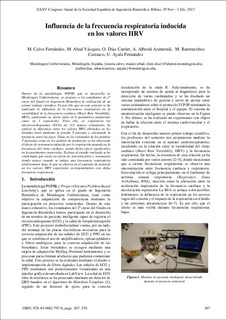| dc.rights.license | Attribution-NonCommercial-ShareAlike 4.0 International | * |
| dc.contributor.author | Barrenechea, Maitane | |
| dc.contributor.author | Alberdi Aramendi, Ane | |
| dc.contributor.author | Ayala, Unai | |
| dc.contributor.other | Calvo Fernández, Marta | |
| dc.contributor.other | Díaz Carriet, Olatz | |
| dc.date.accessioned | 2022-10-28T09:31:10Z | |
| dc.date.available | 2022-10-28T09:31:10Z | |
| dc.date.issued | 2017 | |
| dc.identifier.isbn | 9788490827970 | en |
| dc.identifier.other | https://katalogoa.mondragon.edu/janium-bin/janium_login_opac.pl?find&ficha_no=128134 | en |
| dc.identifier.uri | https://hdl.handle.net/20.500.11984/5775 | |
| dc.description.abstract | The study of Place Cells, hippocampal neurons tuned to spatial locations in the environment, is central to elucidate how the brain encodes and retrieves spatial information. Advances in genetic and imaging technologies have allowed keeping track of the dynamics of large ensembles of Place Cells across multiple days in mice. As the brain processes information at the neuronal population level, novel recording techniques such as in-vivo calcium imaging have the potential to unveil the mechanisms underlying the dynamics of place coding. However, with new recording paradigms comes the need to standardize and optimize the processing and first analysis stages of the data. In this work, we present our efforts in building a pipeline to process, extract, filter, track and analyze Place Cells from mice calcium imaging recordings in a linear-track experiment. To validate the pipeline, we show accurate prediction of the animal actions from the processed neural recordings. Finally, building on the previous steps, we present some tentative results on Place Cell turnover and the relation between predictive-accuracy and noise correlations. | en |
| dc.language.iso | eng | en |
| dc.publisher | Servicio Editorial de la Universidad del País Vasco | en |
| dc.publisher | Euskal Herriko Unibertsitateko Argitalpen Zerbitzua | en |
| dc.rights | © 2017 Los autores | en |
| dc.rights.uri | http://creativecommons.org/licenses/by-nc-sa/4.0/ | * |
| dc.title | Influencia de la frecuencia respiratoria inducida en los valores HRV | es |
| dcterms.accessRights | http://purl.org/coar/access_right/c_abf2 | en |
| dcterms.source | CASEIB 2017: XXXV Congreso anual de la Sociedad Española de Ingeniería Biomédica | en |
| local.contributor.group | Teoría de la señal y comunicaciones | es |
| local.description.peerreviewed | true | en |
| local.description.publicationfirstpage | 367 | en |
| local.description.publicationlastpage | 370 | en |
| local.identifier.doi | https://hdl.handle.net/10810/25657 | en |
| local.source.details | Libro de actas, Bilbao 29 de Noviembre-1 de Diciembre. Editores científicos, Raimon Jané Campos et al. Pp. 367-370 | en |
| oaire.format.mimetype | application/pdf | |
| oaire.file | $DSPACE\assetstore | |
| oaire.resourceType | http://purl.org/coar/resource_type/c_c94f | en |
| oaire.version | http://purl.org/coar/version/c_970fb48d4fbd8a85 | en |








